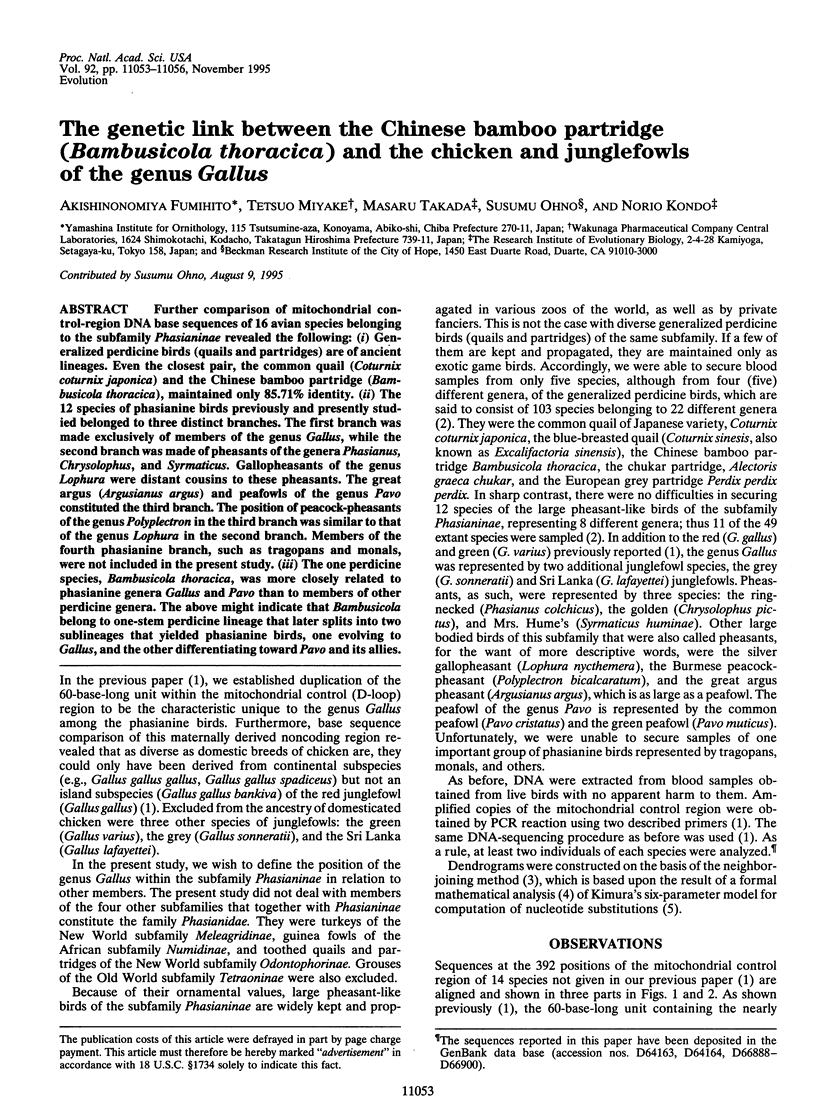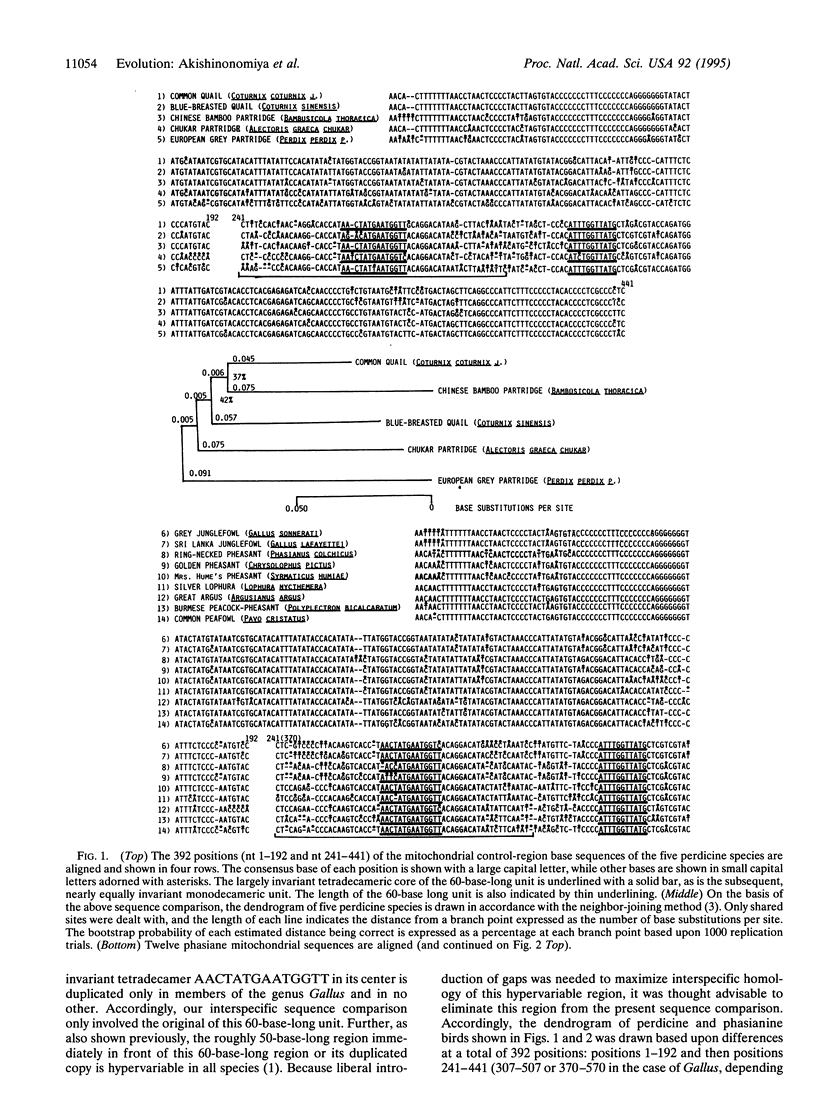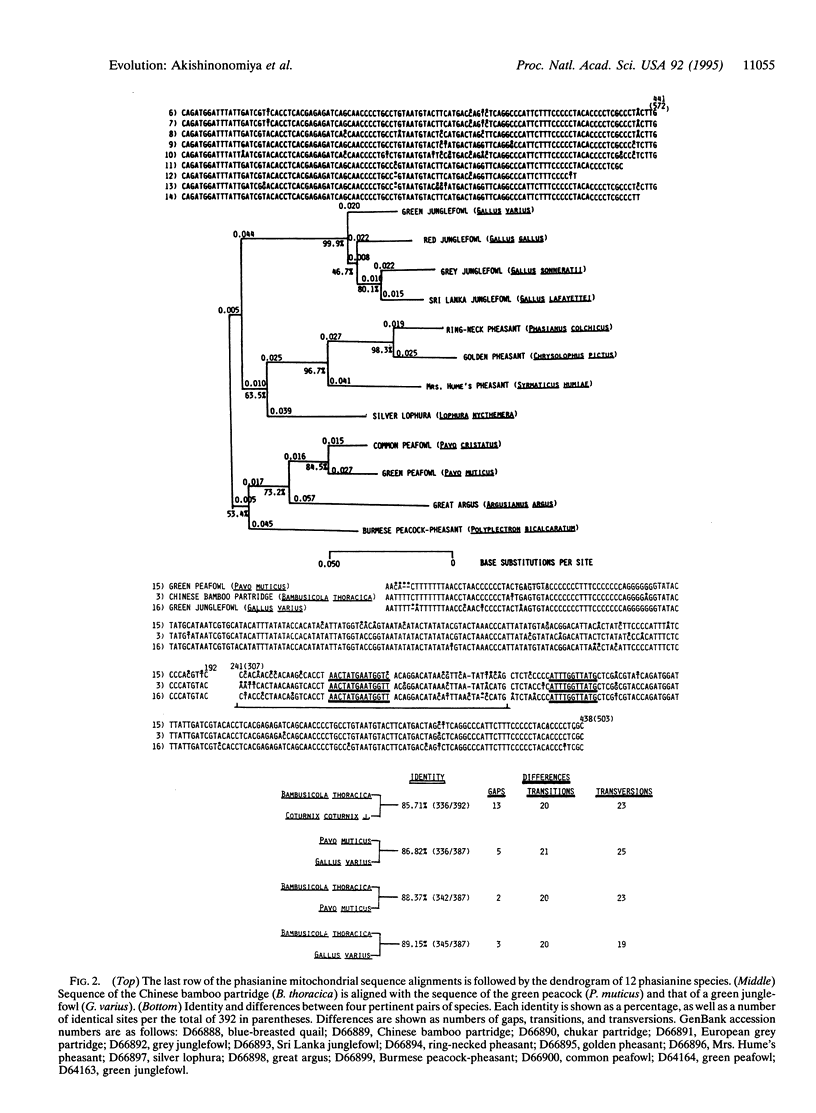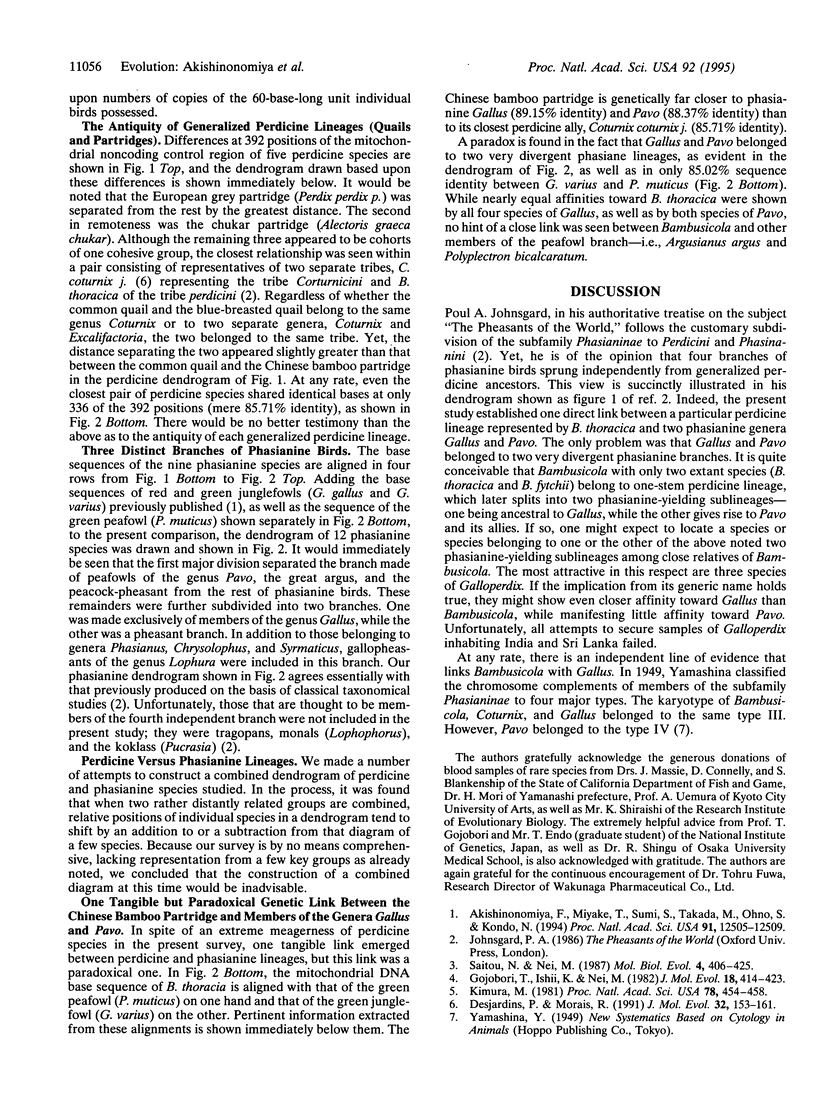Abstract
Further comparison of mitochondrial control-region DNA base sequences of 16 avian species belonging to the subfamily Phasianinae revealed the following: (i) Generalized perdicine birds (quails and partridges) are of ancient lineages. Even the closest pair, the common quail (Coturnix coturnix japonica) and the Chinese bamboo partridge (Bambusicola thoracica), maintained only 85.71% identity. (ii) The 12 species of phasianine birds previously and presently studied belonged to three distinct branches. The first branch was made exclusively of members of the genus Gallus, while the second branch was made of pheasants of the genera Phasianus, Chrysolophus, and Syrmaticus. Gallopheasants of the genus Lophura were distant cousins to these pheasants. The great argus (Argusianus argus) and peafowls of the genus Pavo constituted the third branch. The position of peacock-pheasants of the genus Polyplectron in the third branch was similar to that of the genus Lophura in the second branch. Members of the fourth phasianine branch, such as tragopans and monals, were not included in the present study. (iii) The one perdicine species, Bambusicola thoracica, was more closely related to phasianine genera Gallus and Pavo than to members of other perdicine genera. The above might indicate that Bambusicola belong to one-stem perdicine lineage that later splits into two sublineages that yielded phasianine birds, one evolving to Gallus, and the other differentiating toward Pavo and its allies.
Full text
PDF



Selected References
These references are in PubMed. This may not be the complete list of references from this article.
- Desjardins P., Morais R. Nucleotide sequence and evolution of coding and noncoding regions of a quail mitochondrial genome. J Mol Evol. 1991 Feb;32(2):153–161. doi: 10.1007/BF02515387. [DOI] [PubMed] [Google Scholar]
- Fumihito A., Miyake T., Sumi S., Takada M., Ohno S., Kondo N. One subspecies of the red junglefowl (Gallus gallus gallus) suffices as the matriarchic ancestor of all domestic breeds. Proc Natl Acad Sci U S A. 1994 Dec 20;91(26):12505–12509. doi: 10.1073/pnas.91.26.12505. [DOI] [PMC free article] [PubMed] [Google Scholar]
- Gojobori T., Ishii K., Nei M. Estimation of average number of nucleotide substitutions when the rate of substitution varies with nucleotide. J Mol Evol. 1982;18(6):414–423. doi: 10.1007/BF01840889. [DOI] [PubMed] [Google Scholar]
- Kimura M. Estimation of evolutionary distances between homologous nucleotide sequences. Proc Natl Acad Sci U S A. 1981 Jan;78(1):454–458. doi: 10.1073/pnas.78.1.454. [DOI] [PMC free article] [PubMed] [Google Scholar]
- Saitou N., Nei M. The neighbor-joining method: a new method for reconstructing phylogenetic trees. Mol Biol Evol. 1987 Jul;4(4):406–425. doi: 10.1093/oxfordjournals.molbev.a040454. [DOI] [PubMed] [Google Scholar]


